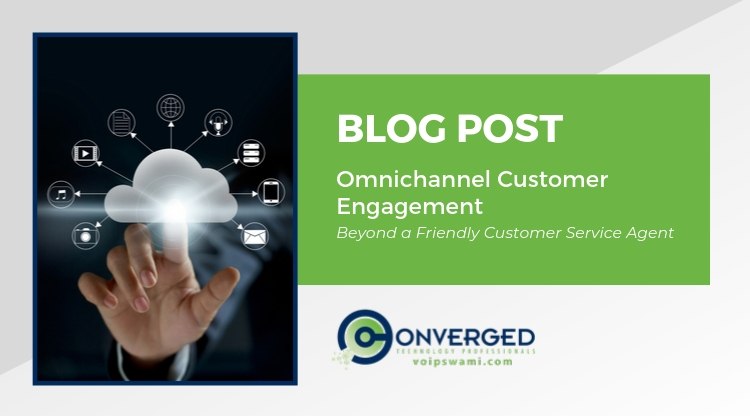
With all the buzz around omnichannel and customer engagement, you may think you have a pretty good idea about what it is, what it isn’t, and what it can do for your organization.
The Customer Service Journey: Then and Now
Satisfying customer demands today is much different than it was even a decade ago. Before omnichannel, it was generally enough to have someone available to answer the customer line whenever it rang. High marks for friendliness, and bonus points for actually being able to solve the customer’s problems.
In today’s hyper-connected times, however, this is nowhere near enough.
According to McKinsey&Company’s analysis of 2017 data for 200 banks worldwide, approximately 60% of banking customers use digital channels and 80% of customer touchpoints and 25 percent of sales occur on digital. And that was from 2017!
If you have a product or service that is so unique that nobody else in the world can compare, if you can’t meet your customer’s expectations of a personalized, seamless customer engagement experience, it’s just a matter of time before you make the transition from unicorn to the proverbial dodo.
Meeting customer expectations is just the first link in the value chain
And what are the expectations of today’s consumer? And how can we satisfy their needs?
In short, a successful omnichannel approach not only provides a help desk platform, but it streamlines multiple digital customer experiences within an integrated internal solutions infrastructure that brings unified convergence which in turn brings internal process optimization to a level that previously would have been a disconnected process.
The Amazon effect: anticipating your needs
We tend to hold every company we do business with against the Amazon yardstick.
Personalization, multiple channel connectivity, and consistent brand messaging across all channels are foundational for successful customer engagement. Add to that logistical transparency, fast, free or low-cost shipping, loyalty rewards, and in-store interactions that extend the online shopping experience – and now we’re getting at the true essence of omnichannel.
The expectation is that, no matter what channel a customer chooses to engage through, that they will be able to pick up where they left off and complete their journey in a way that makes sense to them.
Omnichannel Example in Banking
Let’s look at an example of omnichannel experience in banking. In the morning before leaving for work, a person sees an ad in their email or via social media for a credit card with great benefits and a low introductory rate. They click on the ad, which takes them to the bank’s website, where they start to fill out the application on their mobile phone.
Somewhere in the process, they decide that they would rather speak to an agent directly instead, so she or he abandons the application. The system has created a temporary profile for the person, which is stored within the secure omnichannel platform.
A day or two later, they see the ad for the credit card offer again or are reminded to call the bank via an automated text message. The customer service agent in the bank’s contact center who receives the call asks for a phone number, which matches the temporary profile that was created some days before. At that point, all it takes is a couple of minutes to complete the application.
A digital signature is used to seal the deal, and at that point, a card will be issued and mailed to the customer’s home address.
How omnichannel does more than provide one-way communications
Had the customer taken too long in between initiating their application and calling the bank, the omnichannel system would have sent a notification to a manager or customer service rep, who could then follow up via phone, social media, or through a messaging app.
Omnichannel in Banking Across Multiple Departments
In the above example we had customer service, billing & accounts, and marketing departments all involved to make this customer acquisition process as streamlined as possible.
In another scenario, all banking activity, whether it’s a deposit, sending money, paying bills, or applying for financial products, can be done via a mobile device. Customers who need to solve technical or service-related issues can do so via a chatbot or a live customer service agent that can be accessed directly, either through the bank’s mobile app or other communications channels.
In this case, suppose after the technical issue, a credit is required. The call is transferred and the billing department service agent’s integrated CRM such as Salesforce automatically opens the account record for the customer. The customer name, issue documentation, and account details are presented without the agent requiring the customer to repeat any of these basic account details which would have previously taken more time and a more disconnected experience.
Conclusion: At every point of contact, the customer has been acknowledged and validated. Each customer service agent and associate knows exactly who the user is and what they want to accomplish because every keystroke connected to your request has been saved into the overall system.
Because of this streamlined experience, every single customer service agent will be looking at the same information, ensuring a frictionless experience from end-to-end.
This, ultimately, is what ensures continued patronage and leaves your customers feeling valued and cared for.
This is the omnichannel journey.
If you would like to learn more about omnichannel and how it can support your ongoing success, fill out our contact form or call us directly to request more information.